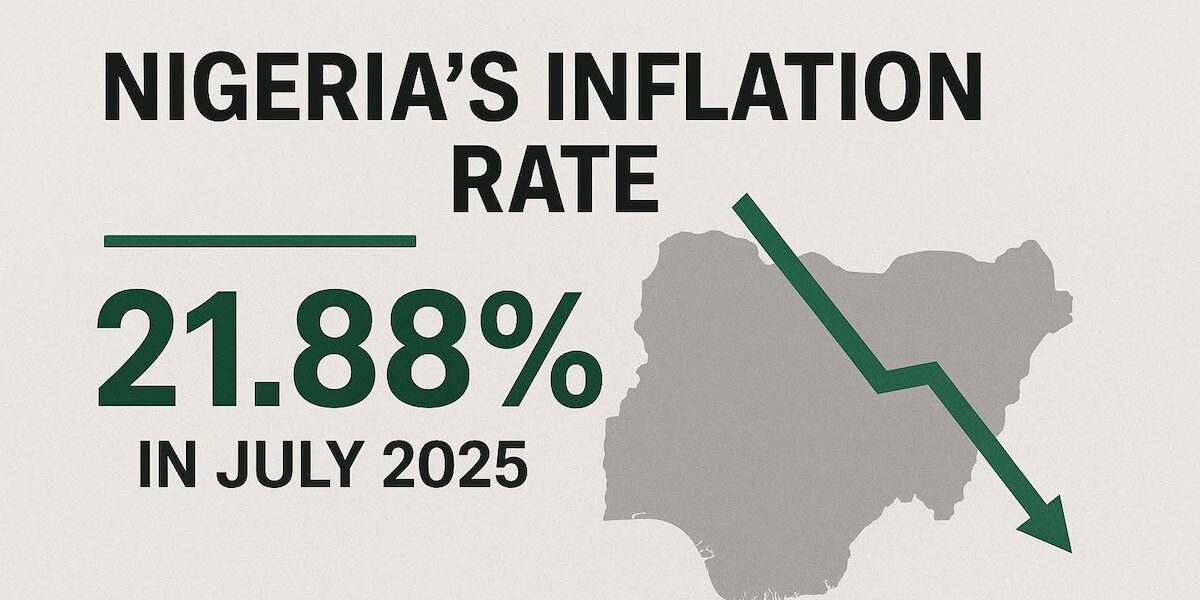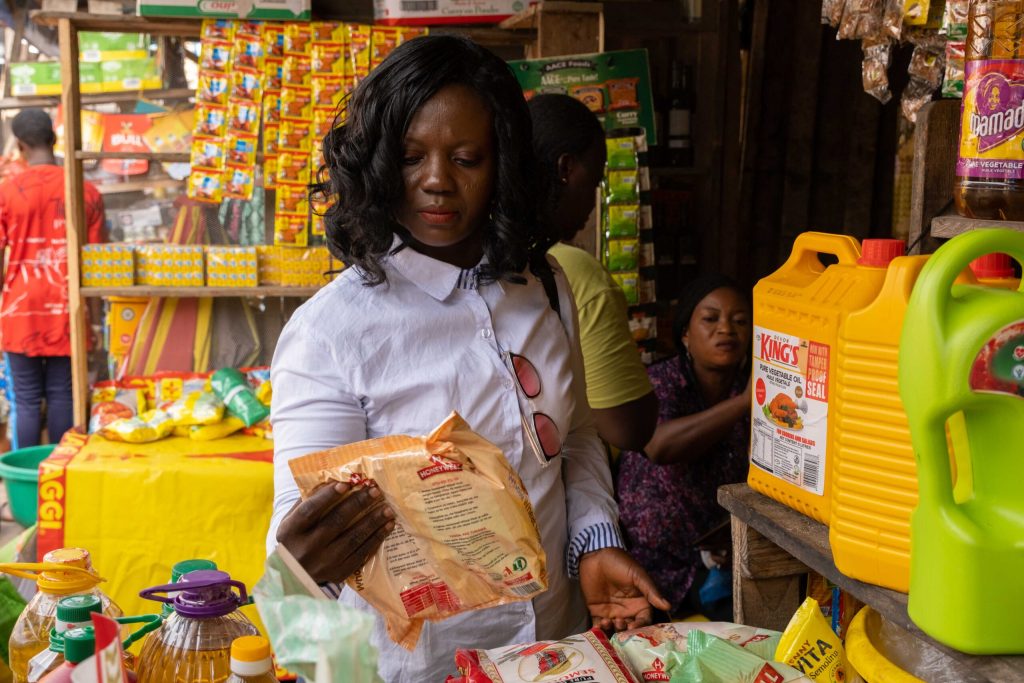Physical Address
60 Ekwema Cres, Layout 460281, Imo
Physical Address
60 Ekwema Cres, Layout 460281, Imo

Nigeria’s inflation went down to 21.88% in July 2025, and this is welcome news for many people across the country. The National Bureau of Statistics (NBS) shared that inflation, which shows how much prices for things like food and transport are going up, dropped from 22.22% in June to 21.88% in July. This is the fourth time inflation has eased this year, giving hope that life might become a little more affordable.
When we say Nigeria’s inflation went down in July 2025, it means that the overall price increases in the country are slowing. Even though prices are still rising, they aren’t rising as fast as before. According to the NBS, the Consumer Price Index, which measures the average price of goods and services, went up slightly, but the speed at which prices are growing became slower.
Read Next: NCBA Issues M-Shwari Loan Limit Fraud Warning to Millions of Kenyan Users
If we compare July 2025 to the same month last year, the change is even more encouraging. The inflation rate is 11.52% lower than it was in July 2024, when it hit 33.40%. This big drop means families are not facing as much pressure from rising costs as they did before. It gives a hopeful sign that the economy might be calming down and things could start to feel more comfortable for everyday Nigerians.

However, even though Nigeria’s inflation went down to 21.88%, when you look at month-to-month changes from June to July, the inflation rate actually rose a little—from 1.68% in June to 1.99% in July. So, prices did rise a bit faster in just that one month, but overall, the yearly pace of price increases is slower.
Looking back to the start of 2025, inflation has moved up and down but mostly gone down as the months passed. It started the year a bit high at 24.48% in January, then dropped to 23.18% in February. It went up slightly in March but since then has been steadily falling every month, leading to the 21.88% figure in July.
Food prices, which affect most people’s daily expenses, also saw some good changes. Food inflation went down a lot compared to last year. In July 2025, food prices were up by 22.74% compared to July 2024’s 39.53%. This is a significant drop, partly because of a technical change in how inflation is calculated. Month-to-month, food prices went down slightly in July compared to June. Items like vegetable oil, beans, rice, and maize flour got a little cheaper, helping to lower the food inflation rate to 3.12% in July from 3.25% in June.
On average, food inflation for the year ending July 2025 was 26.97%, a lot lower than the 36.36% average from the same period last year. This slower rise in food prices is good news for many Nigerians, as food takes up a big part of household spending.
When we look at different parts of the country, inflation varies. In cities, inflation went down to 22.01% in July 2025, which is much lower than the 35.77% a year before. City residents also saw a small drop in how much prices rose month-to-month. In rural areas, inflation was 21.08%, also much lower than a year ago, but prices in rural places went up faster from June to July.
At the state level, some places felt inflation more than others. Borno, Niger, and Benue had the highest yearly inflation rates, while Yobe, Zamfara, and Katsina had the lowest. When it comes to monthly increases, Borno, Zamfara, and Kano saw the biggest jumps in prices.
Read Next: IHS Towers Reduces Infrastructure Spending by 16% in H1 to Protect Cash Flow
Food inflation also differed by state. Borno, Osun, and Ebonyi had the biggest yearly increases in food prices, while Katsina, Adamawa, and Zamfara had smaller rises. For monthly changes, Borno and Kano saw big increases in food prices, but Zamfara, Bauchi, and Abia actually saw food prices go down a bit.
All these numbers show that Nigeria’s inflation went down to 21.88% in July 2025, which is a step in the right direction. While prices are still rising, they’re not doing so as fast as before, which offers some relief for families struggling to keep up with costs. It’s a sign that the economy is slowly improving, and hopefully, this trend will continue so that everyday life becomes easier and more affordable for everyone.
Was this information useful? Drop a nice comment below. You can also check out other useful contents by following us on X/Twitter @siliconafritech, Instagram @Siliconafricatech, or Facebook @SiliconAfrica.